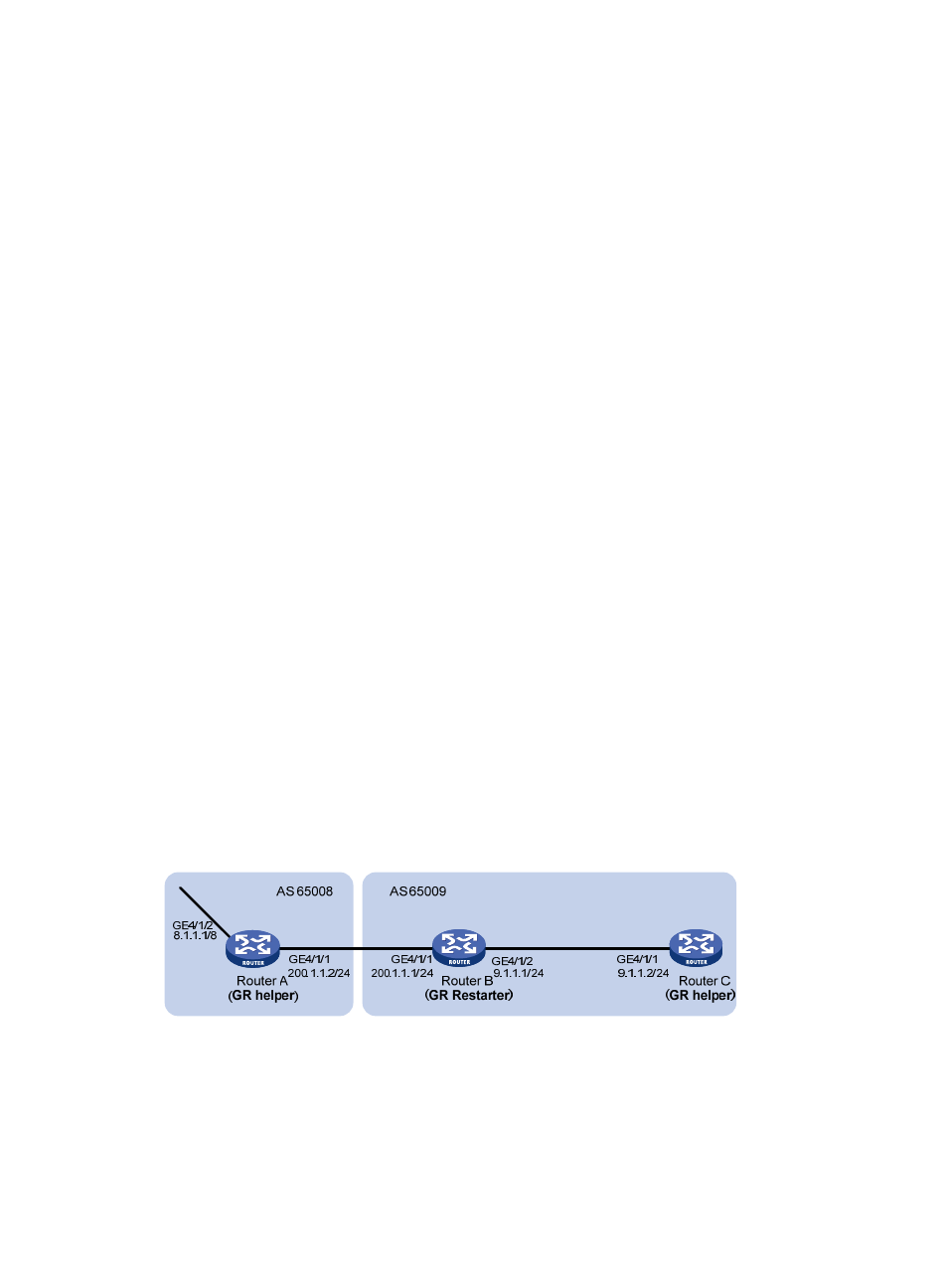Bgp gr configuration example, Network requirements, Configuration procedure – H3C Technologies H3C SR8800 User Manual
Page 274

258
# Define routing policy localpref on Router C to set the local preference of route 1.0.0.0/8 to
200 (the default is 100).
[RouterC] route-policy localpref permit node 10
[RouterC-route-policy] if-match acl 2000
[RouterC-route-policy] apply local-preference 200
[RouterC-route-policy] quit
# Apply the routing policy localpref to the route from the peer 193.1.1.1 on Router C.
[RouterC] bgp 200
[RouterC-bgp] peer 193.1.1.1 route-policy localpref import
[RouterC-bgp] quit
# Display the BGP routing table on Router D.
[RouterD] display bgp routing-table
Total Number of Routes: 2
BGP Local router ID is 194.1.1.1
Status codes: * - valid, ^ - VPNv4 best, > - best, d - damped,
h - history, i - internal, s - suppressed, S - Stale
Origin : i - IGP, e - EGP, ? - incomplete
Network NextHop MED LocPrf PrefVal Path/Ogn
*>i 1.0.0.0 193.1.1.1 0 200 0 100i
* i 192.1.1.1 0 100 0 100i
The route 1.0.0.0/8 learned from Router C is the optimal.
BGP GR configuration example
Network requirements
In
are all BGP routers. Between Router A and Router B is an EBGP connection. Router B and
Router C are connected over an IBGP connection. Enable GR capability for BGP so that the
communication between Router A and Router C cannot be affected when an active/standby main board
switchover occurs on Router B.
Figure 97 Network diagram
Configuration procedure
1.
Configure Router A:
# Configure IP addresses for interfaces. (Details not shown)
# Configure the EBGP connection.
<RouterA> system-view